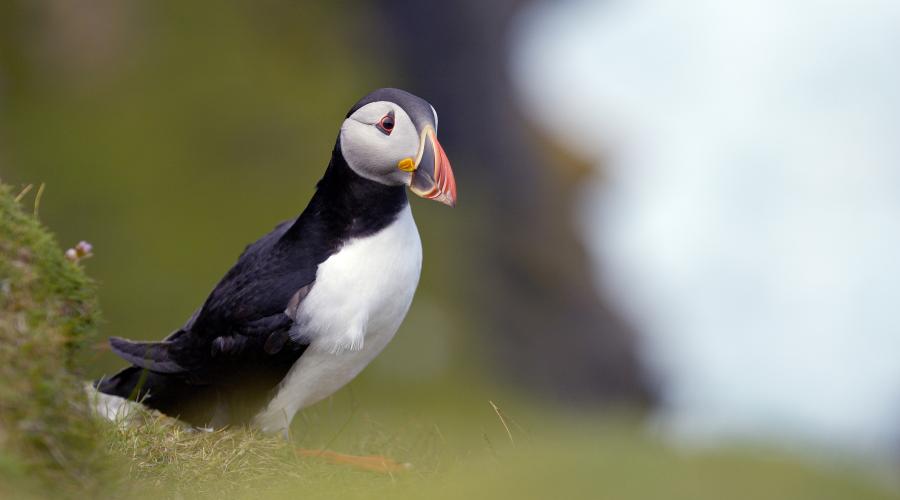
Hermaness NNR - Visiting the reserve
Visit Hermaness for breathtaking cliff-top views and birdlife that overwhelms the senses.
Welcome
Hermaness NNR - visiting the reserve leaflet
Our Hermaness NNR leaflet is a good introduction to the reserve.
Facilities
Toilets
There are toilets at the car park, which are open daily from 1 April to 31 October. (Not suitable for disposal of campervan waste)
Getting here
Hermaness is at the most northerly tip of Unst on Shetland. From the Shetland mainland there are two ferry crossings to reach Unst.
By public transport
There is a bus service from Lerwick to Baltasound, 9 kilometres from the reserve. However, it’s not possible to get back to Lerwick the same day using public transport. You’ll need to stay overnight on Unst.
By car
From Lerwick, follow the A970 north to Voe. Turn onto the A968 to Toft for the ferry to Yell (20-minute sea crossing). Continue on the A968 to board the ferry to Unst (10-minute sea crossing). Head 16 kilometres north through Baltasound. Just before Haroldswick, turn onto the B9086 road signposted to Burrafirth and Hermaness.
ZE2 9EQ is the nearest postcode.
Map
Eight miles from Baltasound, the B9086 leads to car park.
Seasonal highlights
Mid-May to Mid-July is the best time to visit.
Spring
Most of the seabirds arrive in late April. Visit in spring and you’ll see fulmars, gulls, shags and gannets as well as puffins and kittiwakes. Spring squill makes the coastal grassland a carpet of blue in May. The moor is a living tapestry of heather, crowberry, bog bilberry, mosses and grasses.
Summer
Crossing the moorland of Hermaness you’ll be greeted by great skuas – called ‘bonxies’ by the locals. They are notorious for dive-bombing anyone who steps too close to their nests. The blue of spring squill turns to a deep pink as the sea pinks (thrift) come into bloom in summer.
Autumn
Many of the seabirds will have gone by autumn, but you will still see gannets – known as ‘solan geese’ in Shetland. The gannets breed here until September. You can also see grey seals on the rocky shores, and the moorland is tinged red with autumn colours.
Winter
Come to Hermaness in winter to experience a windswept and invigorating environment. This is extreme weather at the edge of the world!
Trails
Take the Saito trail to visit the spectacular western cliffs, alive with the sounds and smells of nesting birds in the breeding season but equally amazing when the Atlantic swell crashes against them. Follow the Muckle Flugga trail for a longer walk north along the cliffs with great views across to the lighthouse and returning over Hermaness Hill.
To help us manage this National Nature Reserve:
- Keep dogs on a lead to avoid disturbing nesting birds and livestock.
- Keep to the paths to avoid disturbing birds and damaging the fragile peatland.
- Please take care along the cliff edge and steep sea-facing slopes.
- Follow requests on any notices you see.
Find out more on
- Visiting the reserve leaflet
- About the reserve
- Visit more of our nature reserves
Related Links
- Designation and management of Scotland’s National Nature Reserves
- Learn more about other protected areas
Saito Trail
Follow the path through the wild moorland interior to the spectacular cliffs on the west coast. Head south along the coast for breathtaking views of the thronging gannet colony.
Muckle Flugga Trail
A circular route across wild moorland, along cliff tops and over Hermaness Hill. Enjoy breathtaking scenery, views to Muckle Flugga and pass the remains of the old signal station.



